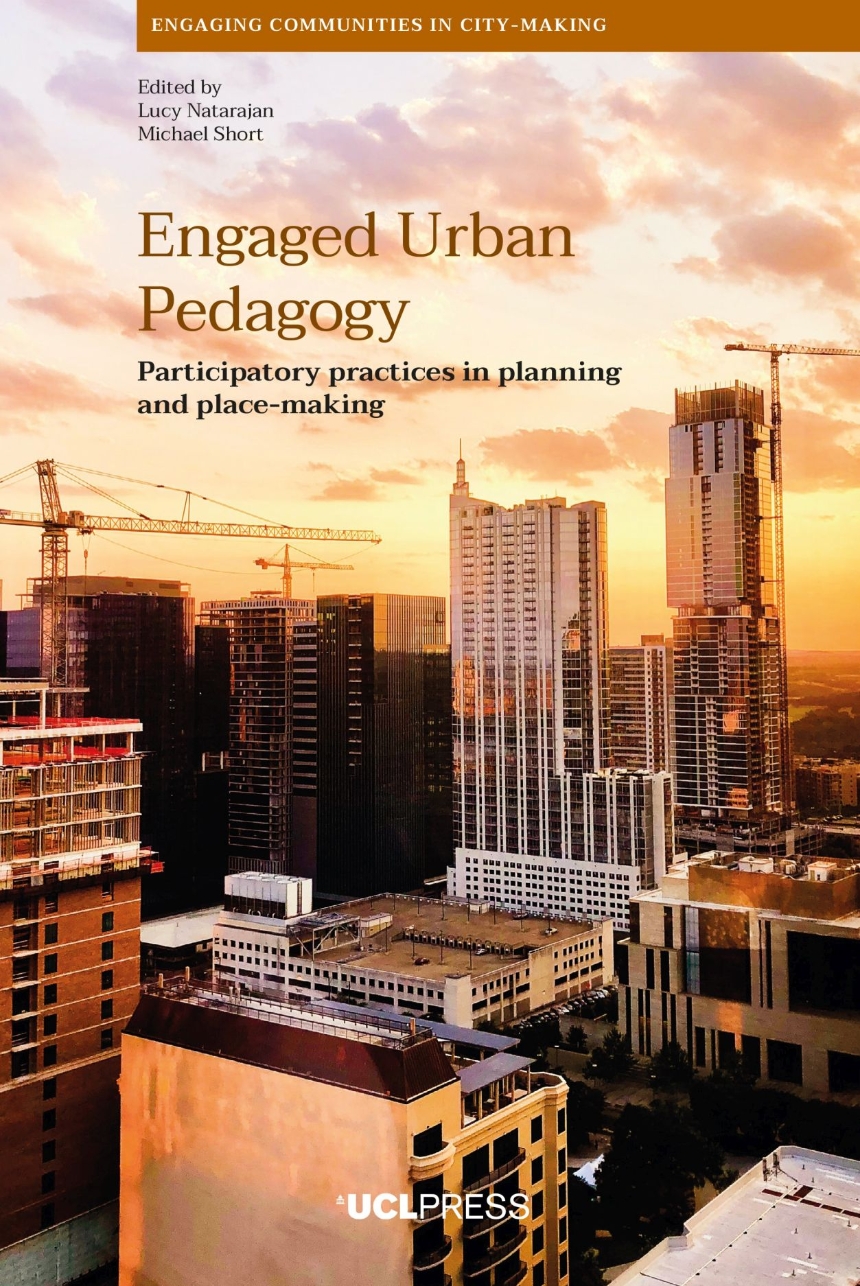9781800081246
9781800081253
Distributed for UCL Press
Engaged Urban Pedagogy
Participatory Practices in Planning and Place-Making
A practical handbook for teaching about the built environment.
Engaged Urban Pedagogy presents a participatory approach to teaching about the built environment by exploring twelve examples of real-world engagement in urban planning involving people within, and beyond, the university. Starting with curriculum review, course content is analyzed in light of urban pasts, race, queer identity, lived experiences, and the concerns of urban professionals. Case studies then shift to focus on techniques for participatory critical pedagogy, including expanding the classroom with links to live place-making processes, connections made through digital co-design exercises, and student-led podcasting assignments. Finally, the book turns to activities beyond formal university teaching, such as those where school-age children learn about their own participation in urban processes together alongside university students and researchers. Drawing on foundational works of critical pedagogy, the contributors present a distinctly urban praxis that will help those in universities respond to the built environment challenges of today.
Engaged Urban Pedagogy presents a participatory approach to teaching about the built environment by exploring twelve examples of real-world engagement in urban planning involving people within, and beyond, the university. Starting with curriculum review, course content is analyzed in light of urban pasts, race, queer identity, lived experiences, and the concerns of urban professionals. Case studies then shift to focus on techniques for participatory critical pedagogy, including expanding the classroom with links to live place-making processes, connections made through digital co-design exercises, and student-led podcasting assignments. Finally, the book turns to activities beyond formal university teaching, such as those where school-age children learn about their own participation in urban processes together alongside university students and researchers. Drawing on foundational works of critical pedagogy, the contributors present a distinctly urban praxis that will help those in universities respond to the built environment challenges of today.
276 pages | 19 halftones | 6.14 x 9.21 | © 2023
Engaging Communities in City-making
Architecture: Architecture--Criticism
Political Science: Public Policy
Table of Contents
List of figures List of contributors 1 Towards an Engaged Urban Pedagogy Lucy Natarajan and Michael Short SECTION I: REVIEWING CURRICULA 2 Race and space: A pedagogic intervention Yasminah Beebeejaun and Catalina Ortiz 3 Queering the built environment curriculum Celine Lessard, Renée Etokakpan, Juliana Martins, Corin Menuge, Jordan Rowe, Ramandeep Shergill, Michael Short 4 Co-designing educational assessments with students and external partners Gemma Moore and Maria Xypaki 5 Engaged pedagogy, informality and collaborative governance in South Africa Stuart Paul Denoon-Stevens, Lauren Andres, Martin Lewis, Lorena Melgaço, Verna Nel and Elsona van Huyssteen SECTION II: PROVIDING TEACHING 6 Planning imaginations and the pedagogic value of external guest speakers Lucy Natarajan and Mike Raco 7 Co-Producing Planning? Neighbourhood Planning as the Context for Participative Pedagogy Elena Besussi and Sue Brownill 8 Podcasting and Collaborative Learning Practices in Placemaking Studies Silvia Gullino, Simeon Shtebunaev and Elodie Wakerley 9 Adapting the Civic Design Method to digital learning and collaboration with communities Pablo Sendra and Domenico Di Siena SECTION 3: EMBEDDING PRACTICES 10 Co-production and the pedagogy of exchange: lessons ??from community research training ?in Birmingham Sara Hassan and Liam O’Farrell 11 Role play activities: a methodology for transformative participation. Teresa Strachan 12 City-to-city learning as impulse for engaged urban pedagogy Raphael Sedlitzky and Fernando Santomauro 13 Building together and co-building the city: Do it yourself! Dominique Lancrenon, Stephan Hauser, Patrick Le Bellec and Melia Delplanque Conclusions 14 Critical pedagogy with urban participation Lucy Natarajan and Michael Short Index

